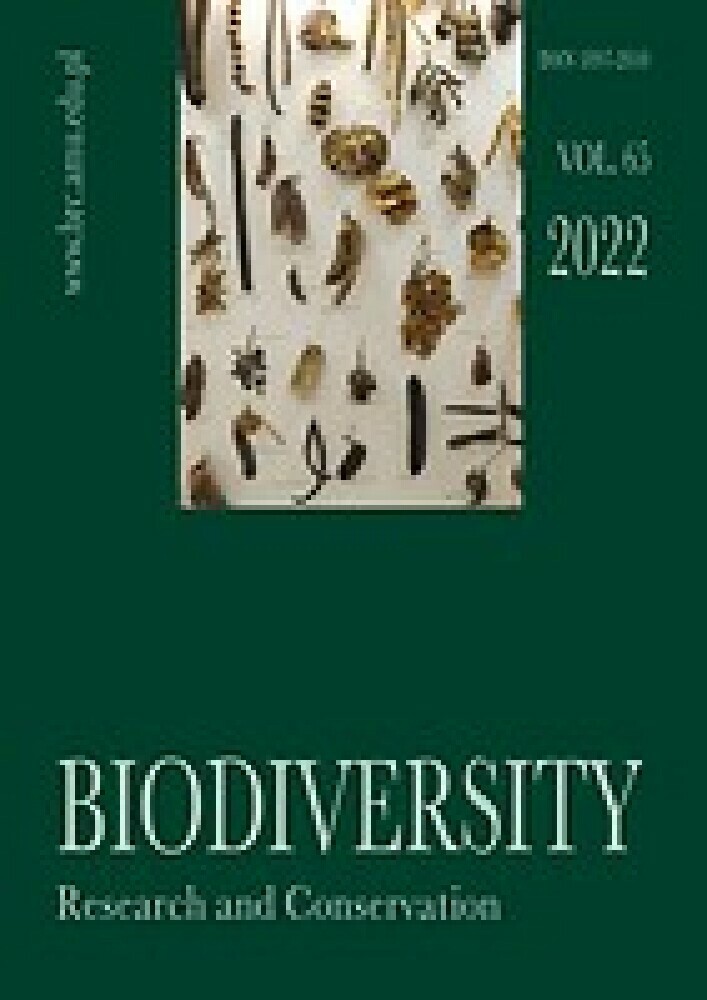Abstract
This paper describes a project aimed at digitizing and openly sharing the natural history collections (AMUNATCOLL) of the Faculty of Biology at Adam Mickiewicz University in Poznań (Poland). The result of this project is a database (including 2.2 million records) of plant, fungal and animal specimens, which is available online via the AMUNATCOLL portal and on the Global Biodiversity Information Facility website. This article presents selected aspects of the “life cycle” of this project, with a particular focus on its preparatory phase.
Funding
This work has been supported by the AMUNATCOLL project and has been partly funded by the European Union and Ministry of Digital Affairs from the European Regional Development Fund as part of the Digital Poland Operational Program under grant agreement number: POPC.02.03.01-00-0043/18.
References
Amunatcoll. Portal 2022. Available online: https://amunatcoll.pl/
Amunatcoll. Mobile app 2022. Available online: https://apps.apple.com/pl/app/amunatcoll/id1523442673 and AMUnatcoll
https://play.google.com/store/apps/details?id=pl.pcss.amunatcoll.mobile
Amunatcoll at Gbif 2022. The occurrence of Natural History Collections of the Faculty of Biology AMU at GBIF. Available online: https://www.gbif.org/occurrence/search?hosting_organization_key=5480dea7-2a71-409b-a832-cbc5f1b5a2e6
Arthur H. J. 1916. The Variable Desert. The Scientific Monthly 3(1): 41-50.
Błoszyk J. & Konwerski S. 2017. Zbiory Przyrodnicze Wydziału Biologii UAM kontynuatorem 160-letnich tradycji muzealnictwa przyrodniczego w Wielkopolsce. Ośrodek Kultury Leśnej w Gołuchowie: 128-139.
Borisenko A. V., Sones J. E. & Hebert P. D. N. 2009.The front-end logistics of DNA barcoding: Challenges and prospects. Mol Ecol Resour 9: 27-34.
Castillo-Figueroa D. 2018. Beyond specimens: linking biological collections, functional ecology and biodiversity conservation. Revista peruana de biología 25(3): 343-348.
CBD 1992. https://www.cbd.int/
Grewling Ł., Szymańska A., Kostecki Ł., Nowak M., Gwiazdowska J., Morawiec-Kowalska E., Nowak M. & Jackowiak B. 2022. What's new about ragweed in Poznań, Poland? IRS 2022 International Ragweed Society Conference, September 8-10, 2022, Budapest, Hungary. http://internationalragweedsociety.org/irs2022budapest/.
Gropp R. E. 2018. Specimens, Collections, and Tools for Future Biodiversity-Related Research. BioScience 68(1): 3-4.
Hebert P. D. N., Cywinska A., Ball S. L., deWaard J. R. 2003. Biological identifications through DNA barcodes. Proc. R. Soc. Lond. B, 270: 313-321.
Hebert P. D. N. & Gregory T. R. 2005. The promise of DNA barcoding for taxonomy. Syst Biol 54: 852-859.
Hilton E. J., Watkins-Colwell G. J. & Huber S. K. 2021. The Expanding Role of Natural History Collections. Ichthyology & Herpetology 109(2): 379-391.
Jackowiak B., Błoszyk J., Celka Z., Konwerski Sz., Szkudlarz P. & Wiland-Szymańska J. 2022a. The natural history collections of Adam Mickiewicz University in Poznań (Poland): an outline of their history and content. Biodiv. Res. Conserv. 65: 1-22.
Jackowiak B., Lawenda M., Nowak M. M., Wolniewicz P., Błoszyk, J., Urbaniak M., Szkudlarz P., Jędrasiak D., Wiland-Szymańska J., Bajaczyk R. & Meyer N. 2022b. Open Access to the Digital Biodiversity Database: A Comprehensive Functional Model of the Natural History Collections. Diversity 14: 596.
Krishtalka L. & Humphrey P. S. 2000. Can natural history museums capture the future? BioScience 50: 611-617.
Lane M. A. 1996. Roles of Natural History Collections. Annalsof the Missouri Botanical Garden. 83: 536-545.
Lawenda M., Wiland-Szymańska J., Nowak M. M., Jędrasiak D. & Jackowiak B. 2022. The Adam Mickiewicz University Nature Collections IT system (AMUNATCOLL): metadata structure, database and operational procedures. Biodiv. Res. Conserv. 65: 35-48.
Meineke E. K., Davies T.J., Daru B. H. & Davis C. C. 2018. Biological collections for understanding biodiversity in the Anthropocene. Phil. Trans. R. Soc. B 374: 20170386.
MEA 2005. http://www.millenniumassessment.org/en/index.aspx.
Nelson G. & Ellis S. 2018. The history and impact of digitization and digital data mobilization on biodiversity research. Philos. Trans. R. Soc. B, 374: 20170391.
Nowak M. M, Lawenda M., Wolniewicz P., Urbaniak M. & Jackowiak B. 2022. The Adam Mickiewicz University Nature Collections IT system (AMUNATCOLL): portal, mobile application and graphical interface. Biodiv. Res. Conserv. 65: 49-67.
Nowak M. M., Słupecka K. & Jackowiak B. 2021. Geotagging of natural history collections for reuse in environmental research. Ecol Indic 131: 108131.
OPDP 2022. https://www.polskacyfrowa.gov.pl/strony/oprogramie/zasady/dla-kogo-jest-program/.
Pearson K. D. & Mast A. R. 2019. Mobilizing the community of biodiversity specimen collectors to effectively detect and document outliers in the Anthropocene. American Journal of Botany 106(8): 1052-1058.
Sav olainenV., Cowan R. S., Vogler A. P., Roderick G. K. & Lane R. 2005. Towards writing the encyclopaedia of life: An introduction to DNA barcoding. Philos. Trans. R. Soc. B 360: 1805-1811.
Soberón J. & Peterson T. 2004. Biodiversity informatics: managing and applying primary biodiversity data. Phil. Trans. R. Soc. Lond. B. 359: 689-698.
Suarez A. V. & Tsutsui N. D. 2004. The value of museum collections for research collections. BioScience 54: 66-74.
Wandeler P., Hoeckl P. E. A. & Keller L. F. 2007. Back to the future: Museum specimens in population genetics. Trends Ecol. Evol. 22: 634-642.
Yap C. K., Go R., Buja ng J. S., Syazwan W. M., Azrizal- Wah id N., Azmai M. N. A., Annav i G., Nulit R., Ibrah im M. H., Omar H., Mustafa M., Aziz N. A. A. 2022. The role of museum of biological collections in environmental research: a short note. MOJ Eco Environ Sci. 7(2): 53-55.
License

This work is licensed under a Creative Commons Attribution-NonCommercial-NoDerivatives 3.0 Unported License.





